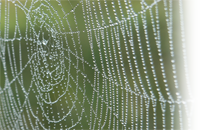





More on dogs watching tv if you're interested. link
In the article, it mentions one more reason that dogs might not respond to tv well: "humans need about 16 to 20 images a second to perceive what we see as continuous film, whereas dogs need about 70 images per second." (cited from the article above). I checked the modern tv refresh rate (at Amazon) is about 60.




This image is a great example of just how different the same color can look depending on its surroundings (the green squares in this image are all the same color - #00FF66). When choosing colors for your website, it is important to keep in mind that the 'perceptual color' your users will see depends on whatever is surrounding the 'true color' that you are picking.






You too should suffer! . Seriously, this was one of those first moments when many of us realized how quickly what we now call a meme could spread and simultaneously annoy and amuse us.

Treat the Wikipedia page on the DST as optional reading, but do take a glance and remember why mathematics, the Fourier Transform, and its kin matter in our daily lives.








According to a research made by the website royal.kingdom.com, the image type used the most on the Internet is GIF. Its use is estimated to be around 54.7%, whereas JPEG gets 30.9% of the share and both are followed by PNG, with only 14.4%. The results were somewhat surprising, considering that the PNG format is very versatile (as seen on the slides above). Apparently, GIFs are still widely used with logos and other small - yet, vastly numbered - images.
Another result found is that although more than half of the images are GIF images (on average), JPG files contribute much more to the total download size of a webpage. They are fewer, but significantly larger on average.
The complete research can be seen here.
Colorado State University, Fort Collins, CO 80523 USA
© 2016 Colorado State University

